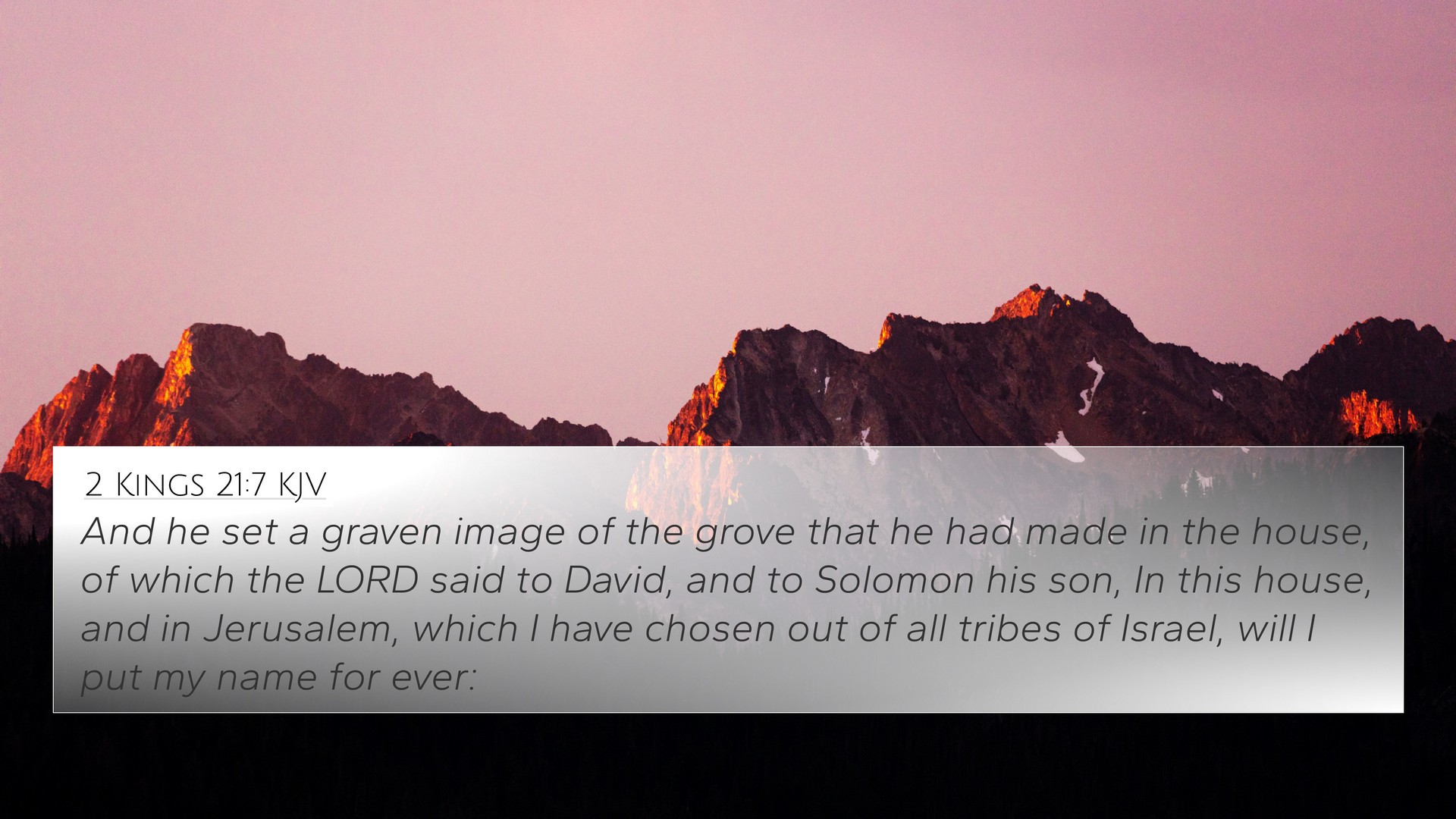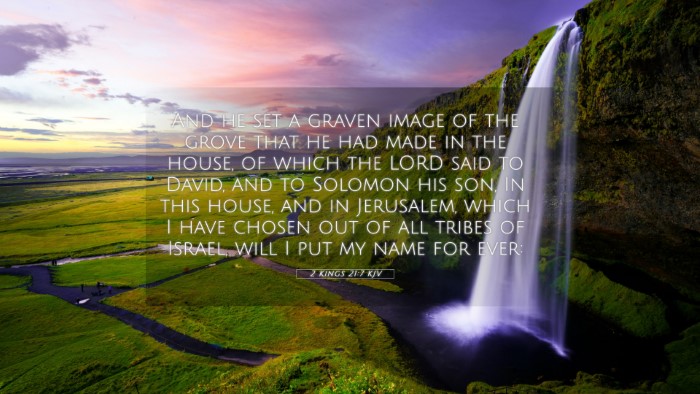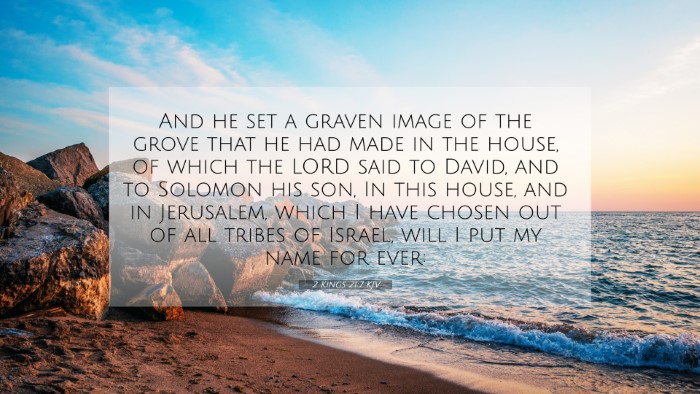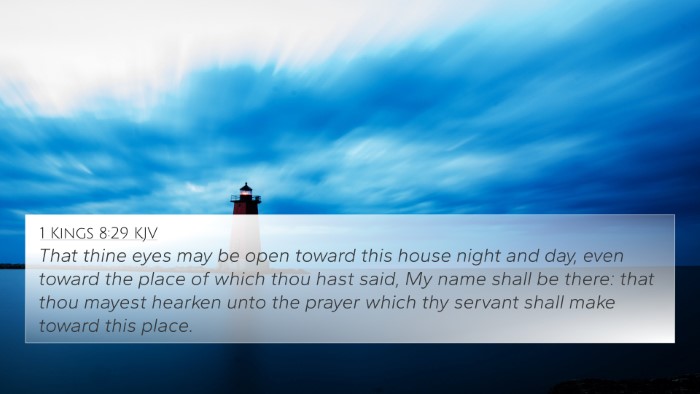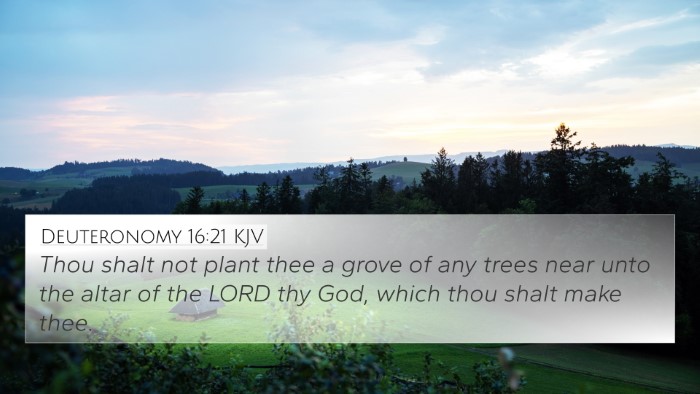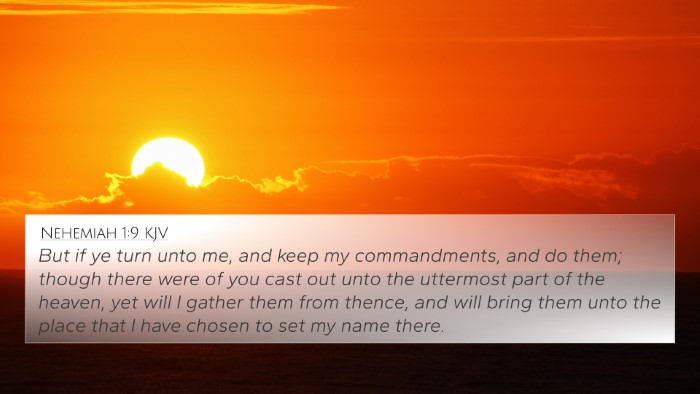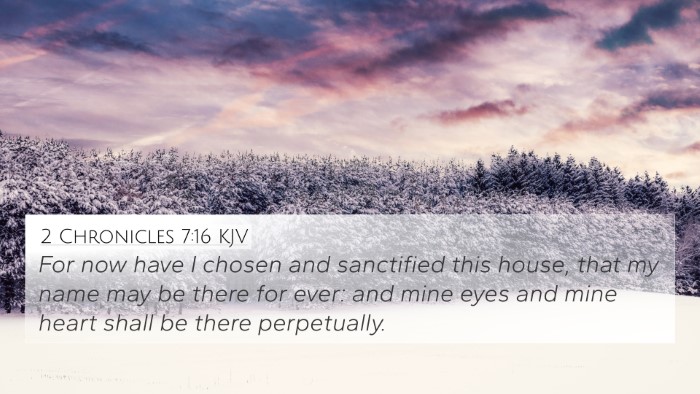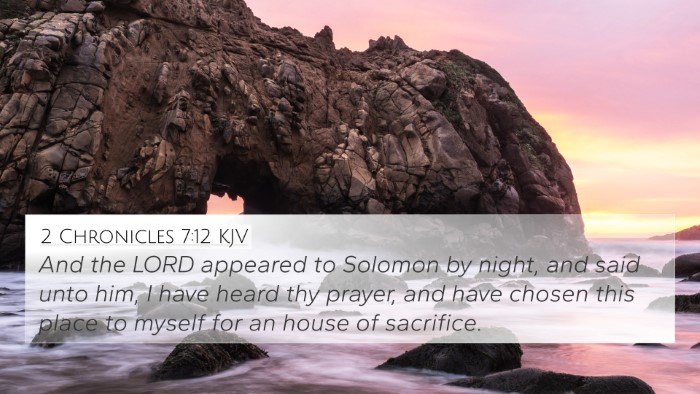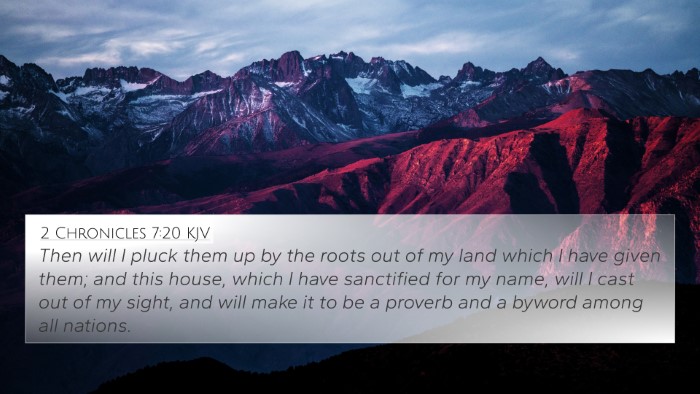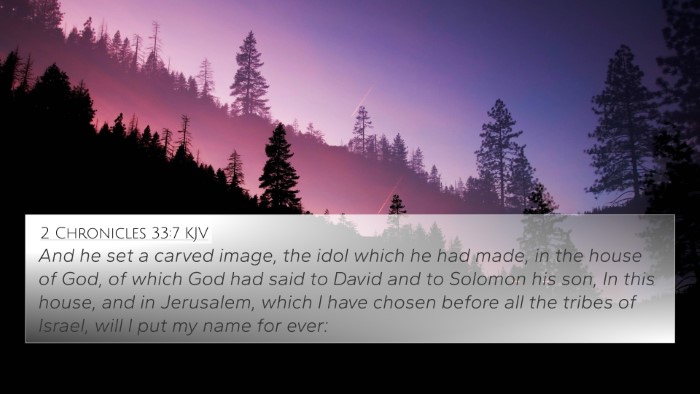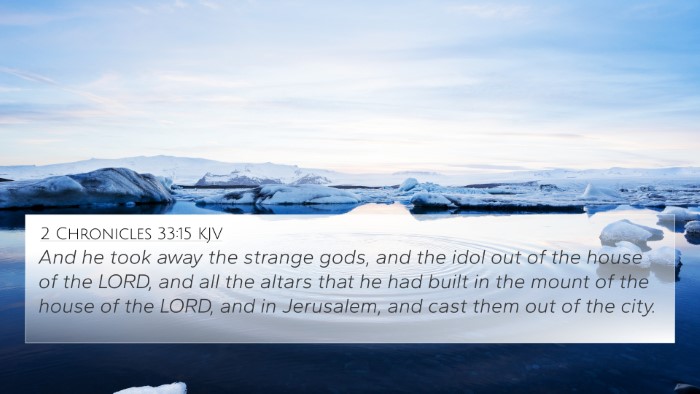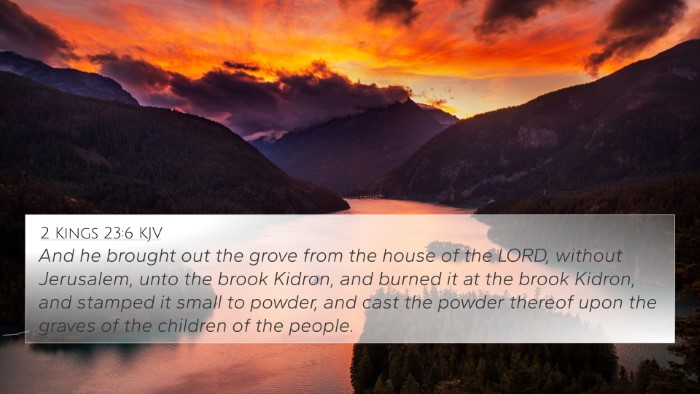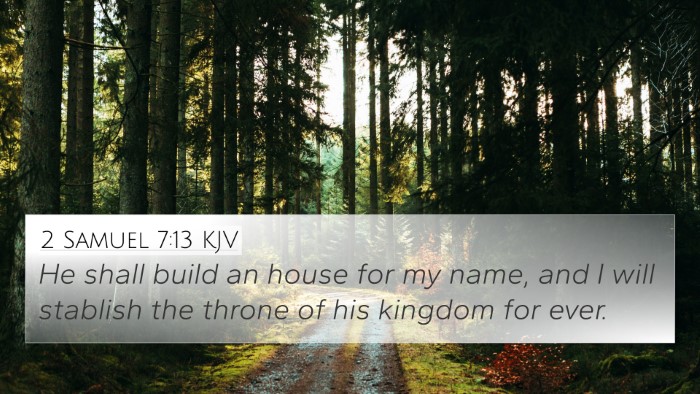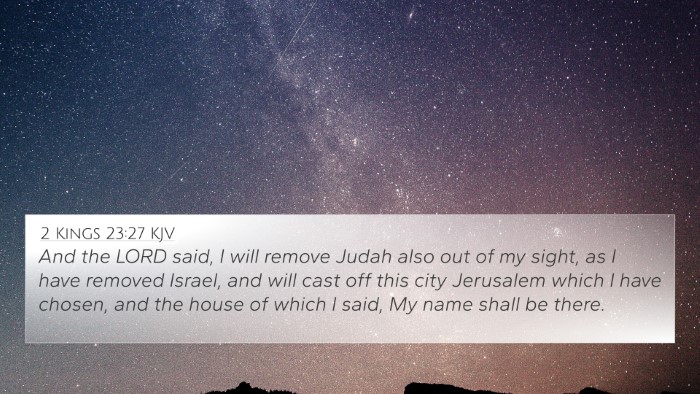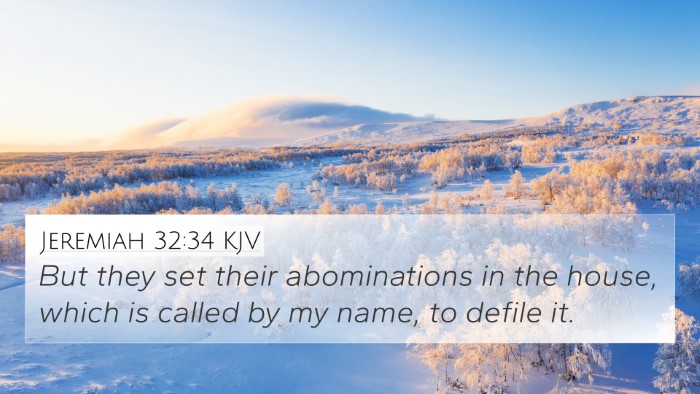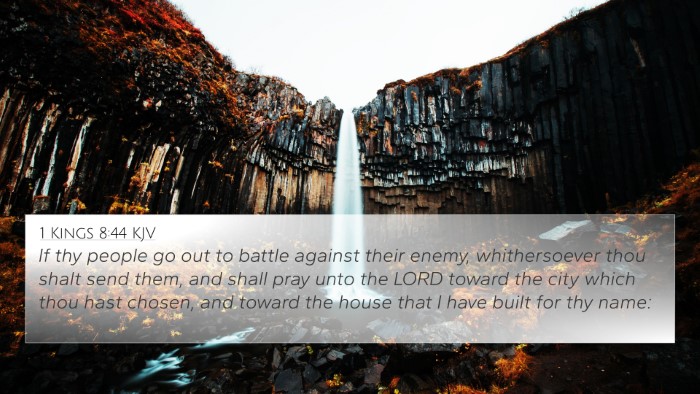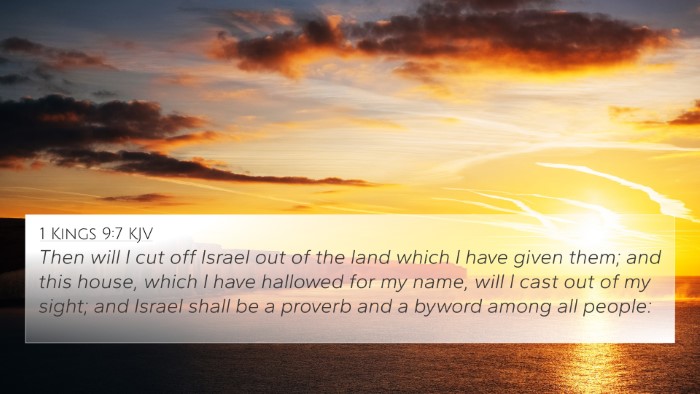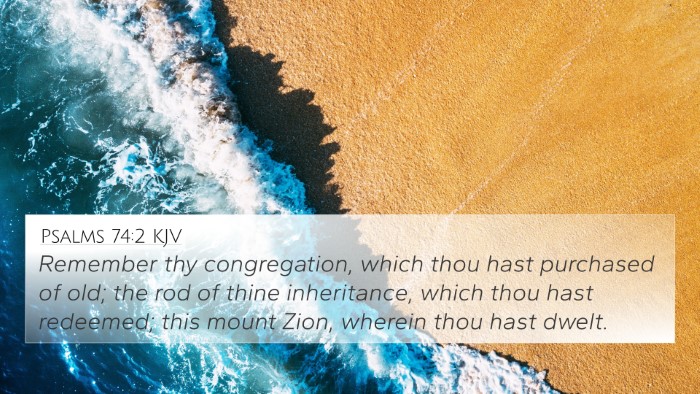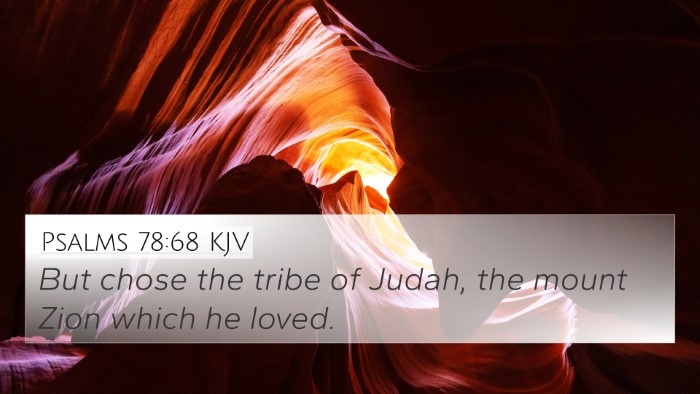Understanding 2 Kings 21:7
2 Kings 21:7 states, "And he set a graven image of the grove that he had made in the house, of which the LORD said to David, and to Solomon his son, In this house, and in Jerusalem, which I have chosen out of all tribes of Israel, will I put my name for ever."
Overview
This verse is set in the context of King Manasseh's reign over Judah, where he committed acts that were regarded as idolatrous and offensive to God. The verse reflects the extensive corruption and spiritual failure of the people during this time.
Commentary Insights
Matthew Henry's Commentary
Matthew Henry emphasizes that Manasseh's actions demonstrate the depth of rebellion against God. By erecting a graven image in the temple area—the sacred space designated for the worship of Yahweh—he blatantly disregarded the covenant established with David and Solomon. Henry underscores that such actions not only provoke God's anger but also lead the nation further into spiritual apostasy.
Albert Barnes' Notes
Albert Barnes notes that the specific reference to the "graven image of the grove" signifies a deepening of idolatrous practices. Barnes highlights that this act represents a direct contradiction to God's commandment regarding the worship of false gods. He points out that Jerusalem, chosen as the religious center, had become a place marked by idol worship, thus emphasizing the severity of Manasseh's sin.
Adam Clarke's Commentary
Adam Clarke provides an analysis of the graven image mentioned, indicating that such representations were in direct violation of the Second Commandment. Clarke ties the significance of this moment to the broader narrative of Judah's rejection of its heritage and identity in favor of surrounding nations' practices. He also mentions the long-term implications of such actions on future generations, leading to national despair and divine judgment.
Thematic Connections
This verse connects to several significant themes in scripture:
- Idolatry vs. True Worship: The tension between serving God faithfully and succumbing to the allure of idols is a recurring theme throughout the Bible.
- Divine Judgment and Mercy: Manasseh's actions illustrate the consequences of sin, yet also set the stage for God's eventual deliverance and mercy.
- Historical Accountability: The leaders’ actions have direct consequences for the people they're meant to guide, as seen across various biblical accounts.
Cross-References
When studying 2 Kings 21:7, several key scripture references emerge:
- Deuteronomy 12:2-4: God’s command against idolatry and the importance of worshiping at the designated place.
- 1 Kings 9:3: The promise of God's name being established in Jerusalem.
- 2 Chronicles 33:7: Further detail on Manasseh's idol worship that led to severe repercussions.
- Exodus 20:4-5: The prohibition against making graven images and the consequences of such actions.
- Isaiah 1:4: Insights into the collective rebellion of Israel against God, paralleling Manasseh's reign.
- Ezekiel 18:30: Calls the people to reshape their lives and turn away from sin.
- Jeremiah 7:30: The defilement of the land due to idolatrous practices, echoing the consequences faced in Judah.
Theological Implications
The implications of the actions taken by Manasseh and their reflection in 2 Kings 21:7 resonate with the understanding of sin and repentance. The verse challenges readers to grasp the significance of spiritual fidelity and the grace offered through genuine repentance.
Conclusion
2 Kings 21:7 stands as a sobering reminder of the struggles between faithfulness to God and the temptation to conform to worldly practices. It invites readers to explore cross-references that deepen the understanding of God’s will, the seriousness of idolatry, and the call for sincere devotion. Embedding oneself in these biblical narratives not only enriches one’s spiritual journey but also informs the faithful on the importance of maintaining a pure heart before God.
Recommended Study Practices
For those looking to explore these themes in depth, the following practices are recommended:
- Utilizing bible concordance tools to find cross-references connected to key themes.
- Engaging in a cross-reference Bible study to connect verses across both the Old and New Testaments.
- Considering inter-Biblical dialogue when analyzing the significance of Old Testament actions in the light of New Testament teachings.
- Documenting bible verse parallels to see how similar messages are conveyed throughout Scripture.
